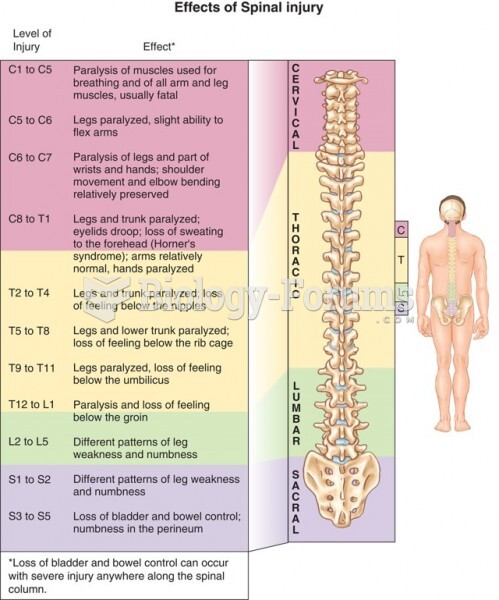|
|
|
Elderly adults are at greatest risk of stroke and myocardial infarction and have the most to gain from prophylaxis. Patients ages 60 to 80 years with blood pressures above 160/90 mm Hg should benefit from antihypertensive treatment.
On average, someone in the United States has a stroke about every 40 seconds. This is about 795,000 people per year.
There are 60,000 miles of blood vessels in every adult human.
People who have myopia, or nearsightedness, are not able to see objects at a distance but only up close. It occurs when the cornea is either curved too steeply, the eye is too long, or both. This condition is progressive and worsens with time. More than 100 million people in the United States are nearsighted, but only 20% of those are born with the condition. Diet, eye exercise, drug therapy, and corrective lenses can all help manage nearsightedness.
In 1835 it was discovered that a disease of silkworms known as muscardine could be transferred from one silkworm to another, and was caused by a fungus.
 How the study of genomes and proteomes can provide us with connections to different biological level
How the study of genomes and proteomes can provide us with connections to different biological level
 A visual inspection on this battery showed that the electrolyte level was below the plates in all ...
A visual inspection on this battery showed that the electrolyte level was below the plates in all ...





